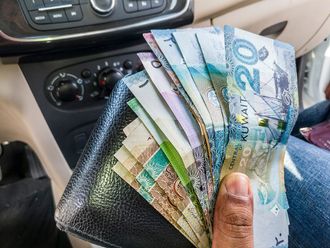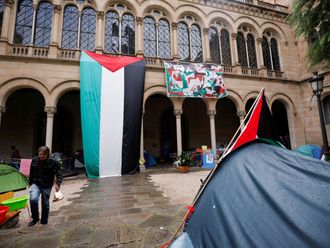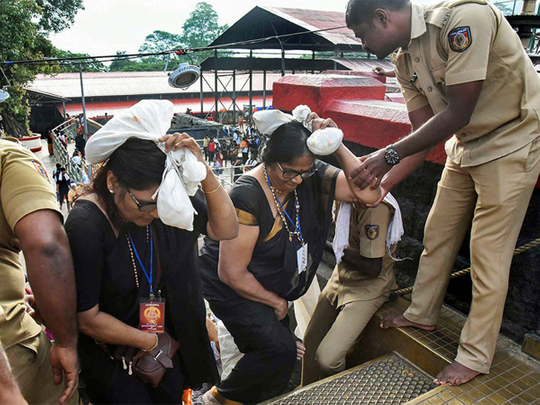
What's happening in Sabarimala
- Devotees protest against the entry of a woman pilgrim, suspecting her to be in the menstrual age
- Sabarimala is one of the most prominent Hindu pilgrimage centres in south India, located in Pathanamthitta District, in the state of Kerala
- Local media channels said journalists were also heckled in the protests
- Hundreds of police personnel, including armed commandos, are keeping a tight vigil in the temple complex and nearby areas to prevent any untoward incident
Sabarimala: There was high drama at the Sabarimala temple complex in the South Indian state of Kerala on Tuesday with devotees protesting against the entry of a woman pilgrim, suspecting her to be in the menstrual age. Lalitha (52) from Tirur had come to the temple with 19 relatives, including women, for her grandson’s ‘chorunnu’ (rice giving ceremony).
She was near the ‘nadapandal’ (area just before devotees climb the 18 steps to reach the sanctum sanctorum) when her group was suddenly surrounded by about 200 frenzied protesters clapping and chanting ‘Ayyappa saranam’ mantra, suspecting that she was below 50 years.
Police immediately intervened and after ascertaining the woman’s age, informed the protesting devotees that she was not in the ‘barred’ age group and escorted her away.
What did the Supreme Court say
The India Supreme Court primarily looked in to the issue on the basis of gender discrimination and right to worship.
Right to worship is given to all devotees and there can be no discrimination on the basis of gender, the court said.
The practice of barring women in age group of 10-50 to go inside the temple violates constitutional principles, the Supreme Court said in its verdict.
Journalists heckled
Local media channels said journalists were also heckled in the protests, however, police denied that any such incident occurred.
Lalitha was later taken to a hospital after she complained of uneasiness.
However, after a while she and some of her relatives returned and offered prayers at the temple, which opened this morning for the ‘Sree Chitira Atta Thirunal’ puja to mark the birth anniversary of the last king of the princely state of Travancore Chithira Thirunal Balarama Varma.
As they were speaking to mediapersons after the ‘darshan’, some of the protesters heckled them.
“We didn’t expect such a situation,” Lalitha and some of her women relatives said.
On Monday, a 30-year-old woman, who had reached the base camp at Pamba along with her husband and two children, went back early this morning without offering prayers.
She had told police that it was her husband who was keen that she should worship at the Ayyappa temple.
The Ayyappa temple here opened Monday for the second time in three weeks for a two-day special puja amid unprecedented security over apprehension of protests by those opposing the Supreme Court order allowing women of all age groups into the shrine.
Hundreds of police personnel, including armed commandos, are keeping a tight vigil in the temple complex and nearby areas to prevent any untoward incident.
The doors of Sabarimala had opened for six days on October 17 for the first time since the Supreme Court allowed women of menstruating age group to enter the shrine, but none could make it to its hallowed precincts amid a welter of protests and violent clashes.
Attempts by around a dozen women, including activists and journalists in the 10-50 years age group, to script history came to nought as frenzied devotees of Lord Ayyappa heckled and hassled them and forced them to retreat.
Both the Congress, the main opposition party in Kerala, and the Bharatiya Janata Party, which is desperately seeking to expand its footprint in the state, have lent support to the agitation against the Supreme Court verdict.
What is Sabarimala and who is Ayyappan?
Sabarimala is one of the most prominent Hindu pilgrimage centres in south India, located in Pathanamthitta District, in the state of Kerala.
The temple is open for worship during the 41 days of Mandalapooja (November-December) Makaravilakku (in January) and Vishu Sankranti (April) — and the first five days of each Malayalam month.
The shrine witnesses one of the largest annual pilgrimages in the world — with up to 50 million devotees visiting every year.
It is one of the ‘richest’ temples in India in terms of seasonal income. During the festive season last year it has achieved a record income of Rs 255 crores or Dh 126,140,810.
In 1991, the Kerala High Court bench restricted the entry of women above the age of 10 and below the age of 50 from Sabarimala Shrine, as they were of the menstruating age.
Essentially, it is this order that the Supreme Court constitution bench had scrapped through its 4-1 judgement, allowing women of all ages the right to enter the temple.
The legend of Ayyappan
There’s one popular legend associated with the birth of Ayyappan, the deity of Sabarimala shrine. Ayyappan is also called Hari-Hara putra, which literally means “son of Hari” (Vishnu – an important deity in Hindu pantheon) and Hara (Shiva - another important Hindu deity). And these two are male deities.
How could Ayyappan be born of two male deities? The story, popular in many South Indian texts, goes like this: In those days, there were constant fights between Devas and Asuras or the gods and demons, but they united once for “Samudra mandhan”, or the churning of the ocean to get Amrit, something like an elixir of immortality.
When the pot containing the elixir emerged from the ocean, the Asuras grabbed it and they wanted to keep it for themselves.
Sensing trouble, Vishnu then took the form of Mohini, a gorgeous female enchantress, and tricked Asuras to hand over the pot containing the exilir.
When Shiva came to know about this, he wanted to see the enchantress Mohini. Vishnu assumed the form again and Shiva couldn’t control his desire for Mohini — and Ayyappan (or Shasta) is born out of their union.
The union of Shiva and Vishnu is narrated in the same vein, with additions and subtractions, in various south texts like Bhagavata Purana, Brahmanda Purana and Tripurarahasya.


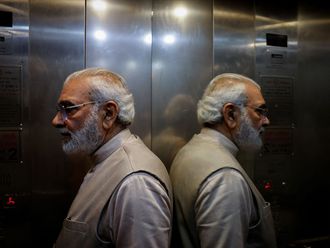

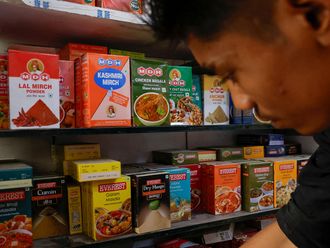
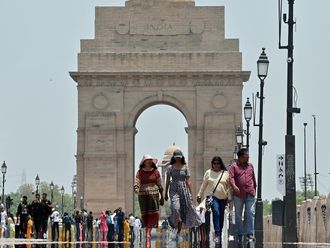
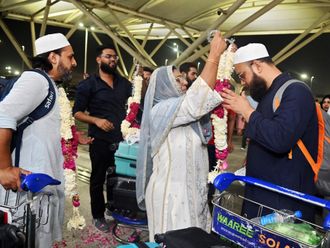

_resources1_16a30b3523c_small.jpg)

